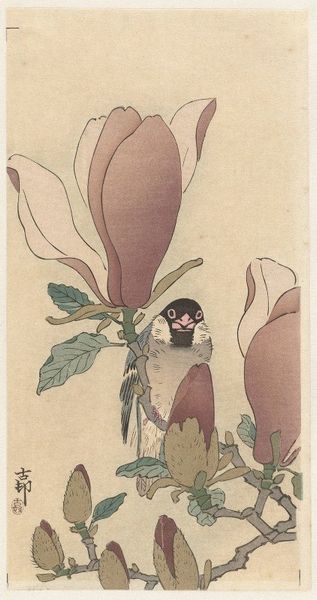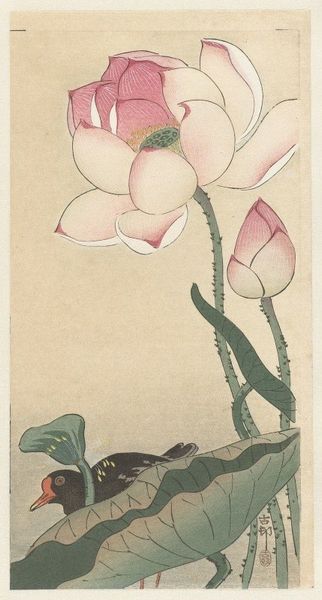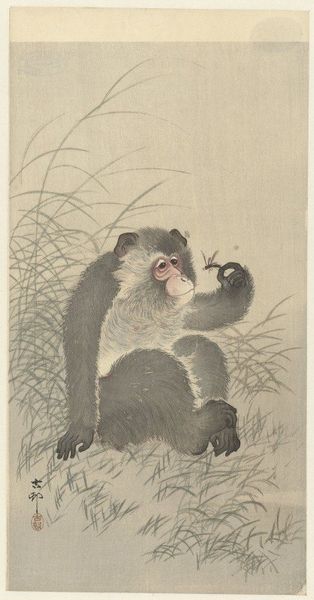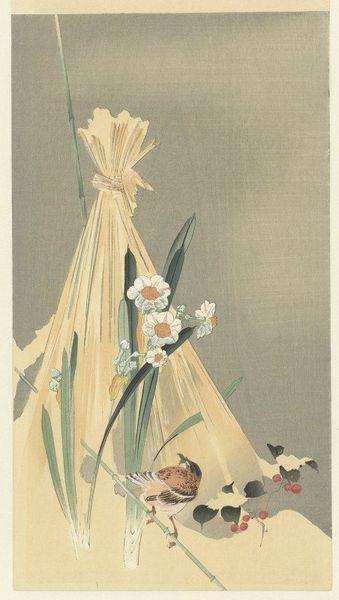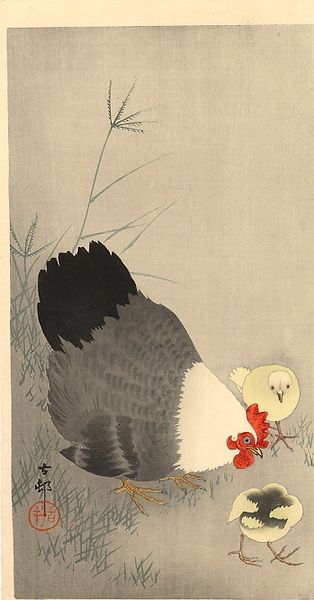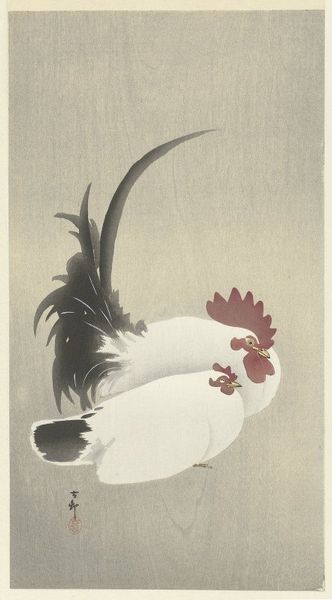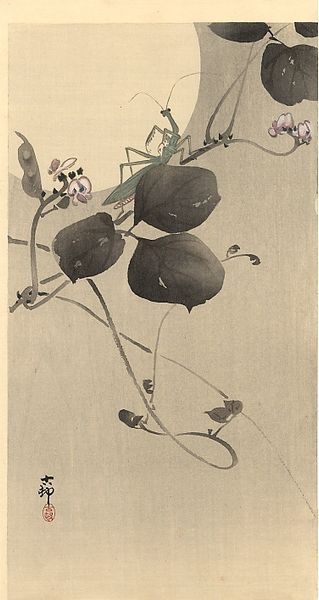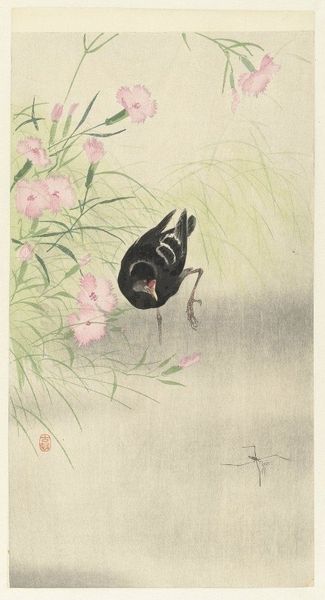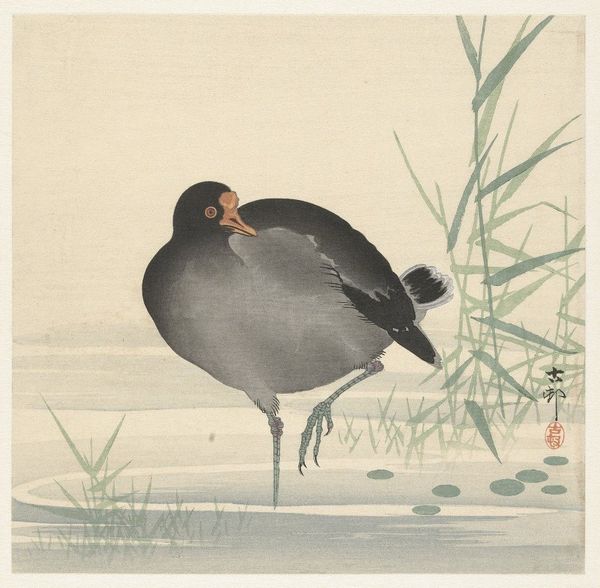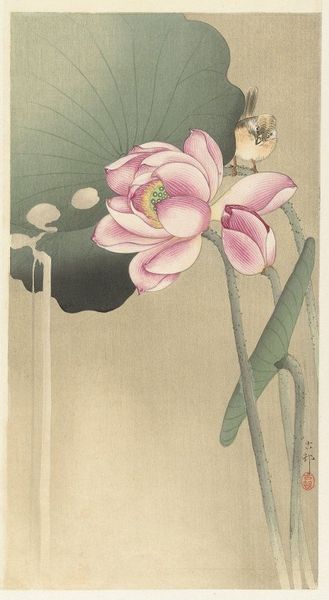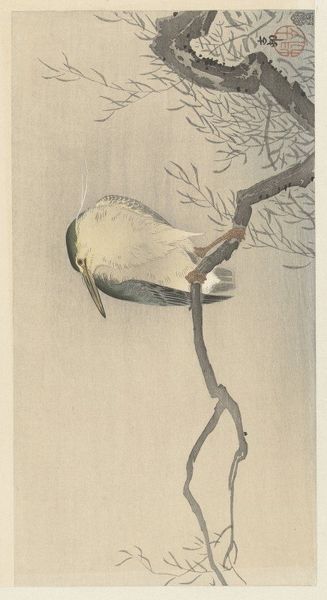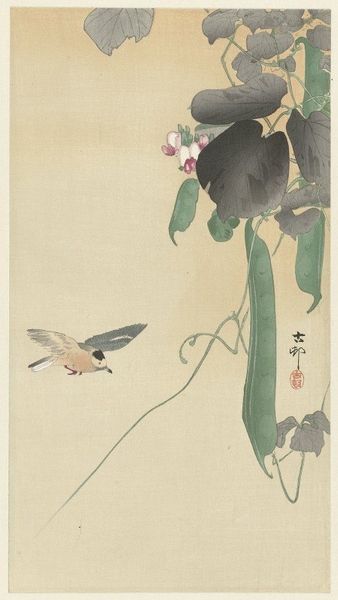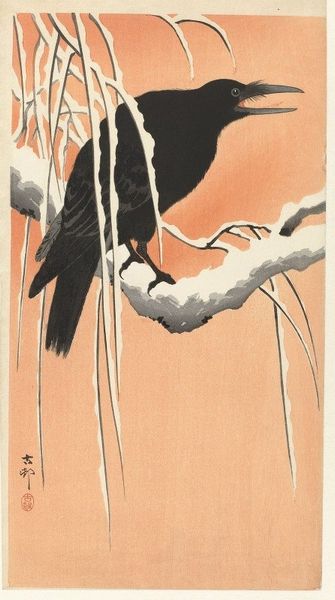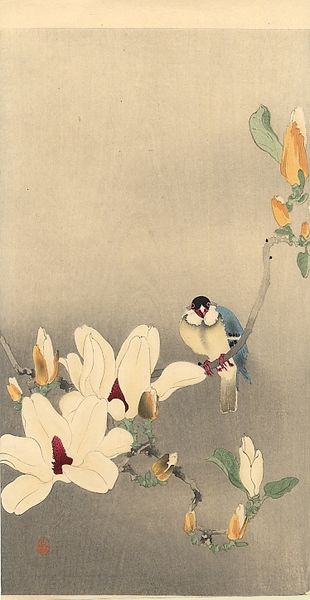
Copyright: Public Domain: Artvee
Editor: This is "Moorhens and Iris," a woodblock print by Ohara Koson, created sometime between 1925 and 1936. I'm really drawn to its quiet beauty and how it captures a serene moment in nature. What do you see in this piece? Curator: I see a layered commentary on the relationship between humans and nature, typical of the Ukiyo-e tradition. It's not just a pretty picture; it reflects a deep cultural understanding of the interconnectedness of life. Consider the iris—often associated with protection, but also transition and change. In this historical moment in Japan, how might this symbolism speak to the rapid modernisation and its impact on the natural world and traditional ways of life? Editor: That’s a compelling way to look at it. I was focused on the surface, but the choice of subject now seems more significant. So, you're suggesting the iris and even the moorhens might represent something more than just themselves? Curator: Exactly. The moorhens, seemingly undisturbed by the bloom, could symbolise a resilience, or even a warning against disrupting the delicate balance. Ukiyo-e prints like this often served as accessible art for a wide audience, communicating social and political messages subtly. Who was this work meant for, and what impact could it have had on them? Editor: That makes me think about the intended audience and how they might have interpreted it back then. Did the rising popularity of these kinds of prints challenge or reinforce social norms? Curator: Both. Ukiyo-e allowed for a wider distribution of imagery, influencing perceptions of beauty, nature, and even social commentary. And you’re right, that tension between challenging and reinforcing existing power structures is crucial to understanding the art. The print is accessible, yet offers layers of meaning tied to identity, tradition, and social commentary. Editor: I see. Thank you; I'll never look at a peaceful nature scene the same way. Curator: And that is the point: art invites questions about ourselves, our societies, and our place in the world.
Comments
No comments
Be the first to comment and join the conversation on the ultimate creative platform.
